#360 Great Armenia
Explore tagged Tumblr posts
Text

Armenian Jew from the Yerevan province, ca. 1866
Historical records attest to a Jewish presence in the Armenian Highlands dating back before the spread of Christianity in the region. Some historians claim that King Tigranes the Great brought thousands Jewish captives with him to the ancient Kingdom of Armenia, following a retreat from Judea. By 360–370 AD, there was a massive increase in Jewish Hellenistic immigration into Armenia; with approx. 300,000 Jews in Armenian lands, many towns became predominately Jewish. The late antique Armenian historian Movses Khorenatsi writes that in the time of the legendary king Hrachya, there was a Jewish merchant named Shambat living in Armenia and that the royal family of the Bagratids were in fact Shambat's descendants.
104 notes
·
View notes
Text
Armenia
Recently, Armenia’s historical, cultural, and natural sights were captured in full by 360 degree images. Ucom, an Armenian isp, and 360Stories, a film crew, carried out this massive undertaking. The end result is stunning.
Image from 360armenia.com (site “Sis Fortress 14”)
As I navigated through the images of 360 Great Armenia, I was pleasantly surprised by not only the lack of lag, but by how…
View On WordPress
2 notes
·
View notes
Text
Saint of the Day - 12 February - Saint Meletius of Antioch (Died 381) Bishop of Antioch
Saint of the Day – 12 February – Saint Meletius of Antioch (Died 381) Bishop of Antioch
Saint of the Day – 12 February – Saint Meletius of Antioch (Died 381) Bishop of Antioch from 360 until his death in 381, Confessor, Defender of the true Faith against heresies – born in the early 4th century Melitene, Lower Armenia (modern Malatya, Turkey) and died in 381 at Constantinople (modern Istanbul, Turkey) of natural causes. Meletius asceticism was remarkable in view of his great private…

View On WordPress
2 notes
·
View notes
Text
Kaden Watches the 2014 Grand Final
First off, I AM SO STINKIN HAPPY THAT IT ISN’T REGION BLOCKED I legit cried when I saw they uploaded it to the official youtube. This was the first show that I was able to watch live and be on Tumblr during, and it was such a fun, amazing time. I’ve been wanting to watch it in full again but couldn’t find it anywhere, and the DVD is extremely rare.
All of my thoughts under the cut, enjoy as this American watches the grand final for the third time since it aired. Feel free to watch along!
Ukraine: I still have this song on my Spotify playlist tbh it’s such a bop. I still love the hamster wheel as a prop and the vocals are pretty on point after the first verse.
Belarus: Hilariously enough I literally JUST listened to this in the car on my way home XD Another iconic song, honestly this whole year was pretty great. The background dancers are a mood. The vocals are pretty great, and it’s just such a silly and fun song. Plus I remember all the memes from this performance XD
Azerbaijan: I don’t remember this song?? But she has such a gorgeous voice omg. not to mention the TRAPEZE. Golly this is such a great performance. Also that dress is absolutely stunning
Iceland: Another absolute bop and meme song that I listened to for years after this. This is just. Such a fun song and the LOVE pose at the end always gets me
Norway: Why does he look like Kobi Marimi. Okay but real talk it’s a pretty ballad, but that’s really it. Not something I should watch close to bed. But seriously he reminds me SO MUCH of Kobi and I have no clue why. Something in the eyes.
Side note, I forgot how great the postcards were for this year.
Romania: I prefer Playing With Fire, but this was still very fun. Always a sucker for the 360 piano.
Armenia: This song was so strange to me when I first heard it, and it still is now. There’s something charming about it though. A simple performance but still really captivating.
Montenegro: Another song I don’t remember? Love the ice skating and the graphics on the floor. His voice is very rich and I always love when an artist sings in their native tongue.
Poland: I had to skip this one =w=‘’ I could barely stomach it when I first watched it. Too much fanservice and the song is awful. I’ve heard other songs by them and they are so much better.
Greece: This plays on Spotify every so often. I really like it, it’s definitely a great party tune and songs like something you’d hear at an American dance club. It’s definitely a lot of fun. Not to mention I love the raps =w= Also the trampoline is great =w= singing while on a trampoline is super not easy
Austria: MY HEART Okay Conchita stole my heart from the first time watching and I have both albums(PLEASE listen to the newest one). Absolutely stunning as always and just. U g h so many feelings. I’m just a puddle of tears again.
Germany: Another one that I still play all the time, I just love the traditional instruments in this. The vocals live aren’t the best, but seriously heroutfit is a look. Oddly enough something in her face reminds me of a good friend of mine. Honestly this performance really feels.. forced =w=‘ Love the song, not too much of a fan of the live. Also the accordion player lowkey looks like Anna Kendrick mixed with Lena. The ad libbing at the end really didn’t sit well to me.
Sweden: While this song did nothing for me when I first heard it, I revisited this performance a year later when I lived with my parents and became absolutely OBSESSED with this song. I still absolutely love it. listen to that CROWD. Great vocals.All the Sanna wigs in the crowd tho
France: Another fun song, the one guy reminded me of Weerd Al upon first watching it but now? He actually low key reminds me of Michal Szpak. And Weird Al. This is so fun and in-your-face after Sanna’s performance.
Russia: I’m still so mad that they were booed because they did so well during this. I really loved the performance. I love the balance beam/seesaw as a prop, and the entwined ponytails. Still one of my favourite songs of the year.
Italy: Ooh, this is a very fun performance? Not too much a fan of the vocals but the music is pretty great. Pretty great performance in terms of Energy.
Slovenia: yet ANOTHER one of my favourite songs that I still listen to. I love this performance, she does such a great job live. Simple staging, but the lighting effects are great. I’ve listened to it so many times that I’ve choreographed a contemporary routine to it in my head, and I still see it during this XD. Seriously this is such a great performance, I hope this made the top ten.
Finland: I feel like this is a song I should have paid more attention to. I really like it and want to look into more by Softengine. I love the high notes, he does them so wel live and the band has so much energy. This is just. So great. This is definitely a song younger me should have gotten into but I think I’ve only listened to it like, Four times? Legit.
Spain: I don’t remember this song at all =w=‘ I like the rain effect. It’s a pretty song and she has very pretty vibrato and her power notes are incredible, but the song itself isn’t doing anything for me.
Switzerland: Oh my lovely Sebalter. Guess what, yet another song I still love and listen to regularly. I remember all the memes that generated from his performance, too. Did we ever find out if the whistling was live? I still love this performance either way. It’s a lot of fun. Most iconic violin next to Alexander Rybak.
Hungary: I remember being so mad watching the Jury section live because I really did not like this song XD The shift from the verse to the chorus just didn’t work for me, felt very disconnected. Plus the song it just really darke? I’m seriously surprised this qualified. The dancing is really well done though.
Malta: I remember everyone calling them Malta and Sons. Not particularly my cup of tea, but still a good performance regardless. I really love their voices.
Denmark: The Bruno Mars comparisons were endless back in the day. This is still a super fun song and I still can’t BELIEVE the studio version was explicit. That one back up dancer is going so hard and I absolutely love it. The Love flag is so cheesy and perfect.
The Netherlands: so SLEEPY. Good performance sure but not when you’re watching right before bedtime. More good use of the floor screen. I’ve noticed there were a lot of instruments on stage this year? Something that didn’t click back in the day. Also is it bad that I lowkey find Waylon attractive
San Marino: Is it bad I forgot that Valentina did manage to qualify one year. All I can think with that prop is Peacock. Interesting song, I really like her vocals in this. She defo deserved to qualify this year.
United Kingdom: It’s funny that I remembered the name of the song and artist but couldn’t remember the song to save my life. Definitely one of the better UK acts of the decade.
~I went to bed bc it was obvious I was getting too tired =w= ~
Graham’s “That’s me!’ got me =w= And all the streamers and such
Watching the recap as soon as I wake up and golly is it a wakeup call =w= Seriously the 2014 Grand was one of my favourites minus Poland =w=;
Took the recap as time to see how many songs from this year I still actively listen to, and that would be 11/26.
Momoland Interval Act: Okay the staging of this is incredible? I know they had harnesses on just in case but when they stood on top of the ladder my heart started palpatating
12 Points Interval Act: Okay this is fun =w= A lot of fun. I’m laughing so hard.
Museum of Eurovision History clip: I REMEMBERED THIS SEGMENT AND I AM CRYING Those poor kids. Also completely unrelated, I had to carpool to a meeting with a co-worker and found out she was actually born and raised in Sweden and moved to the states when she was 11. She remembers dancing around her room to Diggaloo Diggeley.
Green Room Interviews: Amazing that they brought all the foods from the contestants favourite places and the fakeout with France.
Emelie De Forest performance: I know people call this the second most overrated winner next to Euphoria but I really like the song still. A very nice performance and those branch wings are incredible. I also really like Rainmaker. I really like how they brought all the contestants on stage to sing and dance with her.
~I’m gonna miss Jon Ola Sand ; (
Jury Votes: I cut in and out bc I have to do laundry but I still remember how excited I was when Conchita won. I forgot that they said the 8 and 10 points as well as their 12 points. I am so MAD that Russia got booed whenever they got the 10 or 12 points. I also didn’t realize there were only 37 countries this time.
My thoughts on the Top Ten: Y’all know I’m ecstatic that Austria won, I’m actually kinda surprised by the top ten? But this is just based on the Jury votes right? Either way I’m bitter that Slovenia did so poorly and surprised that Hungary did so well. I would have been content with Sanna winning but I am surprised that The Common Linnets did so well. CONCHITA’S REACTION TO WINNING BREAKS ME EVERY TIME
All-in-all, this was a great year, and I am so veryvery happy that I was able to watch it again. Thanks for reading!
1 note
·
View note
Text
Georgia Travel Blog
(September 5-8,2021)
We cross the border into Georgia from Armenia. We travelled there in four hours. Although the government forbade it, we were unable to snap pictures of the beautiful mountain scenery along the route. An immigration office at the border will inspect all of our belongings and documentation. Fortunately, it has already declared that Filipinos having residence visas for the UAE can visit the nation using an E-visa. They requested the Negative PCR test, which we had completed in Armenia before our trip because we were travelling during COVID-19.
Additionally, they needed to reside in the UAE for at least six months before entering the nation. We took our holiday in the Philippines in December 2020 and returned to the United Arab Emirates on January 23, 2021. Even though it has been eight months, they took the time to thoroughly examine our admission and departure stamps from the UAE. (Just kidding, but they don't really trust us anyhow.) We arrived at the Grand Palace Hotel about 4 p.m. We simply take a little nap and unpack the clothes we will need for the next several days. The hotel was decent, but what made it great was that it was close to Europe Square, which has lots of eateries and tourist attractions.
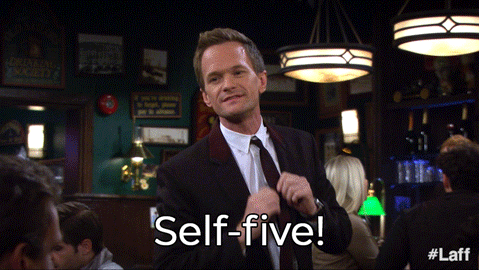
By 5 PM, it was becoming dark outside, so we made the decision to have supper and take a leisurely stroll around Europe Square.
Day 1: Europe Square
-Metal Tree Artwork
- Peace Bridge
-Hot Air Balloon - We each paid 50 gel, and although though it only takes a few minutes, you will get a 360-degree view of Tbilisi. All in all, it was well worth the less expensive price. At least you ought to give it a go.
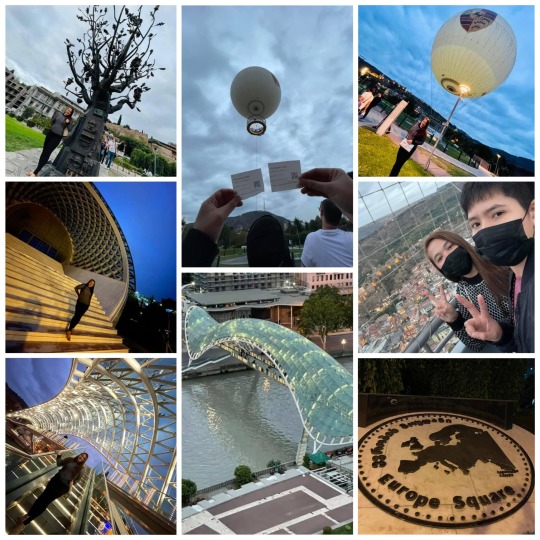
Day 2: Kazbegi
We got up early on our second day because the hotel provides a complimentary breakfast for us. We changed and got ready for our excursion after BF. It was really chilly, and as we didn't realise that our trip would be taking place in a high-range or mountainous location, we didn't pack any coats. Fortunately, we made a detour at the Zhinvali Reservoir, where shawls and other souvenirs were widely available. However, the expense was high. We were forced to get one since, eventually, the linen was still worthwhile. Before we forget, we also made the decision to purchase some mementos.
Note: Book Breakfast in the hotel (it will save you more) and bring jackets on winter !!
-Jinvali Lake
-Aragvi River
-Ananuri Fortress
-Gudauri View Point - From here, you may choose to attempt paragliding and horseback riding, among other things. We were going to attempt paragliding, but I don't have enough cash, and I left my wallet and credit card in the hotel. (We were upset not to be able to attempt the same as we are very into extreme fun.)
Note 2: Never leave your wallet or cards, you’ll never know when you needed it the most
- Russia Georgia Friendship Monument
We had a magnificent lunch at Gudauri, Dushet'Is Raioni; it was a buffet, so we were able to eat a lot, especially because we would be returning home late. Our co-travelers who were lucky enough to experience paragliding took up a significant portion of our tour time. So, when we arrived at Gergeti Trinity Church, we could only see fogs. So, even if we wanted to amuse ourselves, there isn't much to see up there but the church.
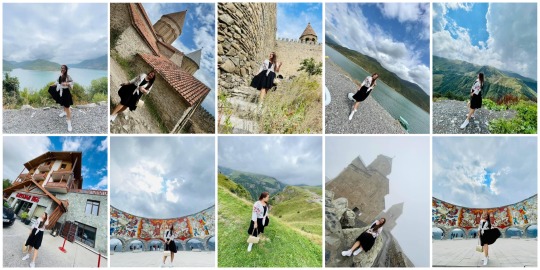
It was very dark on the trip home, and some roads were small and rainy, so the driver drove carefully. We arrived at the hotel at 9 p.m. and opted not to have supper, preferring to sleep and recover.
Day 3: Kakheti and Badiauri - Morning
- Badiauri , We witnessed traditional bread production and sampled their native bread, Puri. It would have been lovely if we had coffee.
- Bodbe Monastery

- Vineria- we had our lunch here , their food is really great . Superb .
- Vineria kakheti - We also did our wine tasting here, and they were gracious enough to let us sample a wide choice of wines. As a result, we decided to purchase six bottles of wine to bring with us to the UAE. You should also try Cha Cha. They stated it wasn't powerful, but it certainly is for me. haha

Day 3: Sighnaghi
-Sighnaghi Village or the city of love -I enjoy going here because the environment is pleasant, and you may choose to stroll or ride an ATV. But we like to stroll to observe the beauty of the hamlet; they also offer ziplines.
-Georgia's Great Wall - if you start, you must finish all the way to the end. There's no turning back. We simply did it, and it was well worth it.
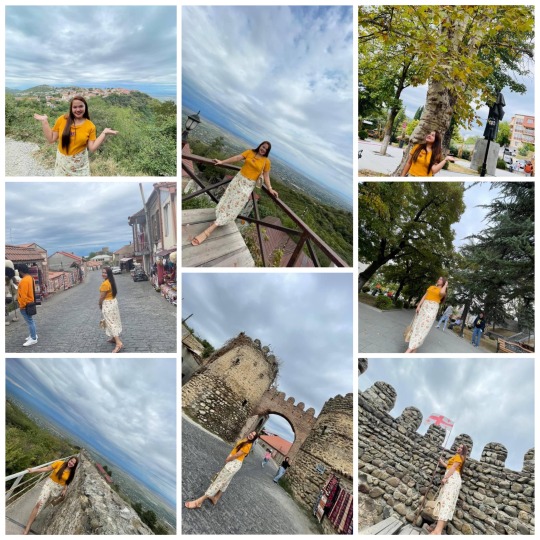
We arrived at the hotel at 4 p.m., slept briefly, and then chose to eat supper at Pasanauri restaurant, as my friends had advised us to eat pork in Georgia.It did not disappoint us; it was quite excellent and tender. Unfortunately, we cannot have this in the UAE.
Day 4: Mtskheta and Old Tblisi
-Jvari Monastery
-Aragvi and Mtkvari Rivers
-Svetitskhoveli Monastery - It was pouring when we arrived, and the monastery was under renovation, but we still managed to shoot several images before leaving.
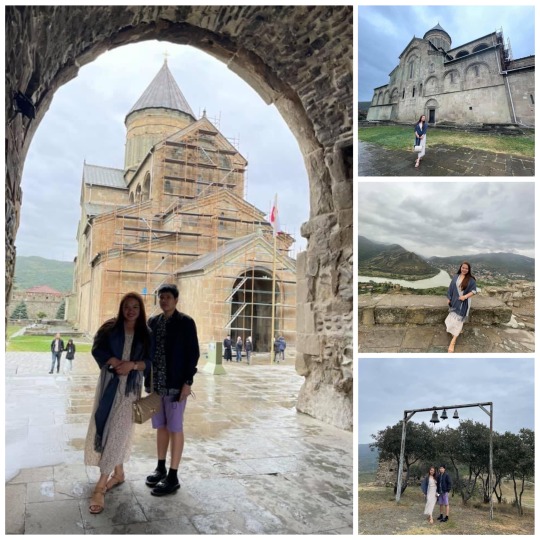
-Old Tblisi - It was intended to be free on the first day of the trip, but because we came late, we did it on the last day, which was still free; unfortunately, we were unable to experience their famed sulphur bath because we had a flight that afternoon. But you gotta try!!
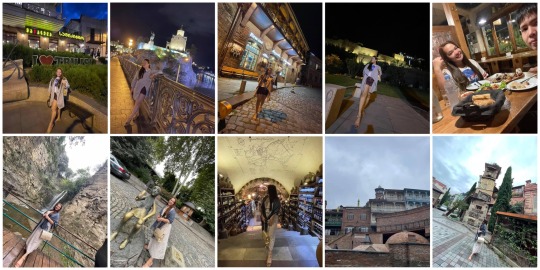
We returned to the hotel at 2, checked out, and waited for the bus to bring us up. We decided to eat lunch at the airport as we waited for our flight back to the UAE.
Here are our costing:

#travel#travel photography#travelwander#travel budget#travelblogger#traveller#hashtagwanders#travelling#travelgram#explore#travels
0 notes
Photo



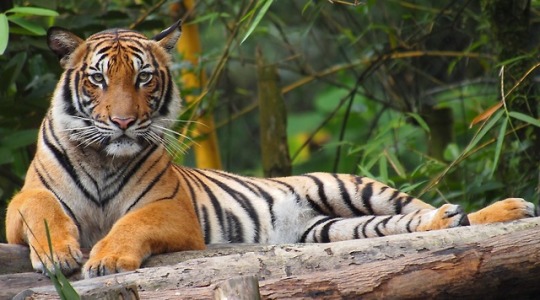
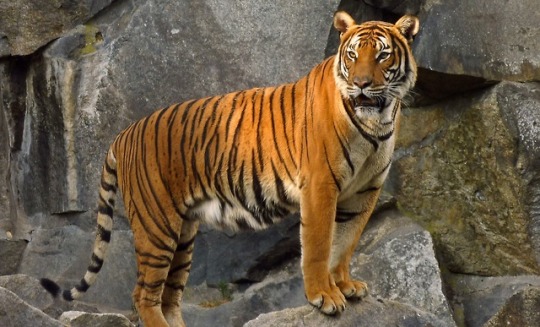

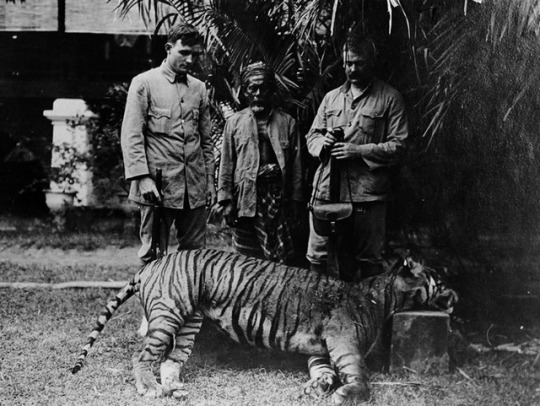
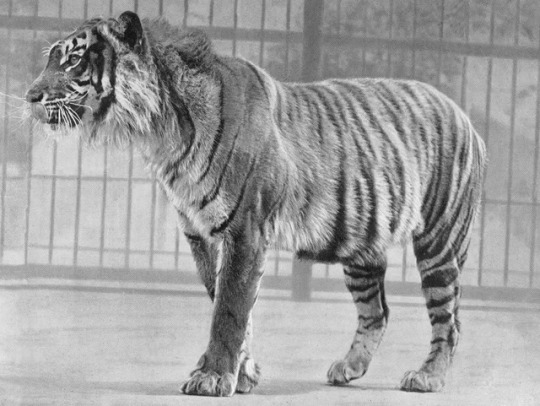

Endangered Felines, part 1
Tiger, Panthera tigris
Without a doubt one of the most iconic and recognizable animals on Earth, the tiger was voted the world’s favorite animal in 2004, with the domestic dog coming in second, and dolphins third.
I was planning on splitting tigers into one post per subspecies, but since there are sadly so many cat species that are endangered, this series will be long enough already, and it gives a better overview to have them all in one post.
And just as I was researching for this post, it turns out that in 2017, the tiger was reduced to a mere two subspecies - the mainland (P. t. tigris), and the Sunda Island (P. t. sondaica) populations - but this is disputed, as there are morphological and genetic differences between these populations. In this post, I will treat them all as their own subspecies.
While at first I was a bit skeptical about the switch to now only having two tiger subspecies when I think about it more, it's actually great for tiger conservation, because that means we don't have to be "subspecies purists" anymore. This means we can repopulate areas with another population easier, without claims of "it's an invasive/foreign animal".
While I will try to keep each topic brief, this will still be a lengthy and exhaustive post, as you can’t simply brush over things in the most beloved and famous endangered animal on Earth.

This is the historic range of all tigers. From the far northeast of Russia to the east of the Black Sea, by Georgia, Armenia and Azerbaijan, all the way to the far southern islands of Java and Bali.
Today, they have been extirpated from most of their range, with three of the nine former subspecies extinct. By 2017, there were just under 4000 tigers in the wild combined, and that is after a recent rise in numbers, for the first time in over a century. A couple of hundred years ago, there were at least 40 000 tigers in India alone.
They are estimated globally to have numbered around 100 000 in the year 1900, meaning 97% of tigers were lost in a century.
Occasionally hunted throughout history, either because of fear, sport among the wealthy or for their parts, tiger hunts took on a new dimension when Europeans colonized India and other parts of South Asia, with "gentlemen sports hunters" proudly subduing nature. And later in the 20th and 21st centuries, mainly poaching for body parts used in "traditional medicine".

An Indian tiger hunt carried out by Lord Reding, Viceroy of India, likely in the mid-1920s.
Direct hunting is not the only threat against tigers, as the human population in Southeast Asia has exploded over the past century, and today, there is nowhere left for wildlife to go.
The tiger has been listed as endangered under the IUCN, consistently since its first assessment in 1986.

Bengal tiger, Panthera tigris tigris
The Bengal is without a doubt the most well-known of all tiger subspecies, not the least due to our strong association of tigers with Indian culture. They are also the most numerous tiger population today.
They are 90-110 cm tall at the shoulders and weigh up to 325 kg, with males averaging 235 kg, and females ranging from 116-164 kg.
Given a separate assessment by the IUCN in 2008, the Bengal tiger is considered endangered. Today, they number around 2300 animals in the wild, 1700 of which are in India, 440 in Bangladesh, 200 in Nepal, and 75-100 in Bhutan.
The population is severely fragmented, and no subpopulation contains more than 250 animals. Despite cautiously optimistic news a couple of years ago, they are still considered "decreasing".
If 40 000 was the original number of tigers in India, today, there are only 4% left, and it is still the biggest stronghold of wild tigers anywhere.

Amur tiger, P. t. altaica
More famously known as Siberian tiger, this name is inaccurate as they don't live anywhere near Siberia, which is a large chunk of eastern Russia, having no eastern coastline. While the tiger lives in the very far southeast, near Korea. They are also known as the Manchurian, Ussurian and Korean tiger.
As can be seen on the map above however, they did have a far larger range before widespread hunting nearly wiped them out.
The largest cat on Earth today (after the extinction of the Caspian tiger), they are the second most numerous tiger population, at around 500 animals in the wild (in 2005, they were estimated at 360). They were saved on the brink of extinction, as only a couple of dozen animals remained when they were finally protected.
Despite this vast increase however, the effective population size is only equivalent to around 30 animals, which is close to the total world population when they were saved from extinction. This is due to inbreeding from a smaller and smaller population that then had only a handful of already related animals to rebound from.
It was in the early 20th century that the Amur tiger was nearly wiped out, due to the massive societal change that was going on in Russia at the time. Armies on both sides of the civil war based in Vladivostok made it their mission to kill as many tigers as they could.
Tigers were extirpated from the Korean peninsula by the Japanese in the same period, when Japan occupied Korea. Today, South Korea is working on once again creating a home for the Amur tiger in their lands.
The Soviet Union finally banned tiger hunting in 1947, after which anti-poaching control was very strict. Cubs kept being live-caught well into the 1960s however.
In the middle of the 1900s, deer populations fell in the Amur tiger's range, leaving them no choice but to find other prey. Bizarrely, more than 30 cases of tigers attacking bears were recorded, and bear hair was found in tiger droppings.
After the fall of the Soviet Union in 1991 and the subsequent economic and societal collapse, people were free to poach tigers again, with some doing it to sell to the Chinese market. Today however, the population is stable, but vulnerable.
In 1965, it was given the listing of "status inadequately known", and this was not changed until 1996, when they were assessed as "critically endangered". This laster until 2008, when they were moved to endangered.
At present, there are about as many Amur tigers in human care as there are in the wild, totalling about 1000 Amur tigers on the planet. The zoological population has a higher genetic diversity than wild tigers, as the foundation stock was largely caught when tigers were more numerous in the wild.
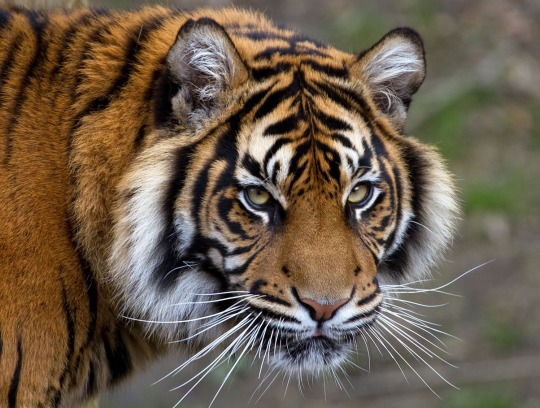
Sumatran tiger, P. t. sumatrae
The Sumatran is the one tiger that I personally can recognize easily, due to their striking and bold facial pattern. They are among the smallest tigers alive today, with males reaching only 140 kg - this is a size similar to jaguars. They are also the only Indonesian or Sunda island tiger still in existence.
The Sumatran tiger has been consistently listed as critically endangered since their first assessment in 1996.
They number approximately 500-600 animals, not including ones in zoos and other collections.
Their threats are mainly a shrinking habitat due to palm oil and Acacia plantations leading to a depletion of prey, as well as poaching for their body parts.
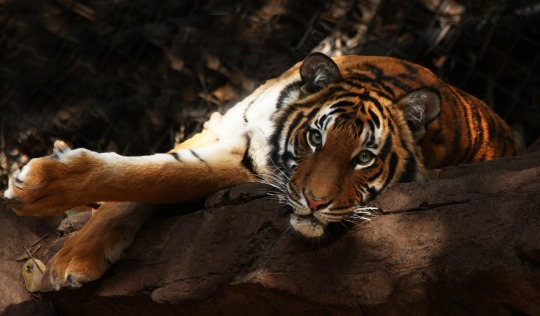
Malayan tiger, P. t. jacksoni
Although recent research has discovered that there is no real difference between this and the Indochinese tiger, it was considered its own subspecies since a DNA analysis in 2004, until the recent merge where all mainland tigers are considered P. t. tigris.
Subspecies or subpopulation, the Malayan tiger was listed as “endangered” in 2008, and in 2014, it was reassessed under its current listing as critically endangered.
This was because they had declined by 25% in only one generation (7 years).
In the 1950s, there were about 3000 Malayan tigers. In the 1990s, there were 500, and in 2013, they were estimated at 250-340 animals. This gives an estimate of only around 100 breeding adults in the wild.
The total number in human care is difficult to get to, but apparently in 2011, there were 54 Malayan tigers in American zoos alone, spread across 25 facilities.
The Malayan tiger's habitat has shrunk from nearly 100 000 square kilometers before 1970s, to less than 45 000 square kilometers in 2014. Aside from this threat, is of course poaching for body parts for a Chinese market. Between the years 2000-2013, body parts equating to 1425 tigers had been seized, 94 of these being Malayan tigers.
The Global Tiger Recovery Program, made up of 13 countries where tigers live, set a goal in 2010 to double their tiger populations by 2022. Malaysia had made a similar promise before this agreement, in 2009, with their National Tiger Conservation Action Plan setting to doubling Malaysia's tiger population by 2020.
With the new population estimate of 250-340 adult Tigers and diminishing prey base and natural forests, it is biologically impossible to reach the NTCAP target by 2020.
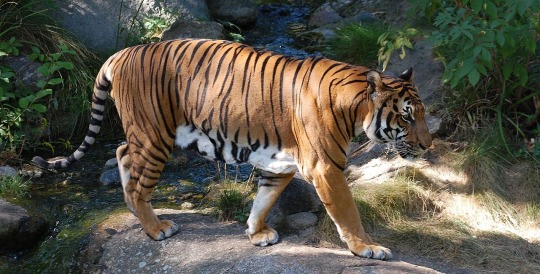
Indochinese tiger, P. t. corbetti
The Indochinese tiger lives in Southeast Asia, and is viewed as the ancestor of all tigers, the other subspecies diverging around 72 000-108 000 years ago.
They are functionally extinct in Vietnam, Cambodia and possibly China, and number around 300-400 animals in total, the largest population being in Thailand.
They have been listed as endangered since 2008.
They are the least represented in zoos out of all tiger subspecies, and no coordinated breeding program exists. Approximately 14 zoo tigers have been discovered to be Indochinese after DNA analysis of 105 animals in 14 countries.

South China tiger, P. t. amoyensis
This is the most threatened tiger subspecies as they are believed to be extinct in the wild, since the last time one was live-caught in the 1970s.
Only 20 years earlier, they numbered more than 4000 animals, but then came Mao Zedong's "Great Leap Forward", when all wildlife stood in the way of "progress" (remember the Baiji).
Large-scale government anti-pest campaigns took off, and tigers were massacred, mercilessly. This was made worse by deforestation, heavy settling of the countryside from the cities (as part of the GLF) and over-hunting of their prey.
By 1973, they were partially protected, and by 1977, hunting was completely prohibited.
By the early 1980s, they were estimated at 150-200 animals, though not one tiger has been seen since the early 70s.
They are considered critically endangered, possibly extinct in the wild, but there is hope there still are a handful of tigers holding on in the wilds of China. For example, in 2007, a bear and a cow were killed by what was most likely a tiger.
In 2005, the entire zoological population numbered 57 animals descended from only six tigers. Despite being inbred and suffering poor breeding success as a result, DNA tests showed many aren’t pure South China tigers anyway. Another estimate (made difficult by crossbreeding) in 2007 put the global zoological population at 72 animals.
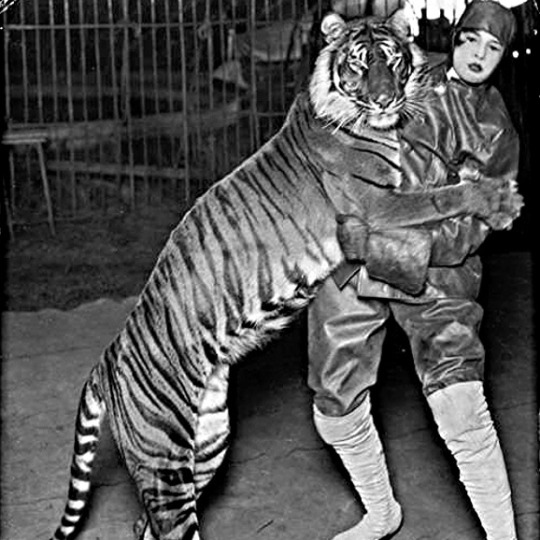
Bali tiger, P. t. balica
The Bali tiger, formerly inhabiting only the island of Bali since 12 000 - 13 000 years back, was the smallest of all tigers, with males only reaching up to 100 kg and females 80 kg, putting this tiger around the same size as a jaguar or cougar.
They were only listed as extinct by the IUCN as late as 2008, but the last one probably died just after the second world war, with the last known tigers recorded in the 1930s.
The Bali tiger was killed off through a lethal cocktail of environmental destruction (palm plantations and rice fields) and sports hunting by the Dutch colonizers. The West Bali National Park was established in 1941, but it came too late to save the tiger.
This animal was never filmed alive nor held in zoos (though it seems the Ringling Bros Circus had one), and it is very difficult to even find photos of live animals.
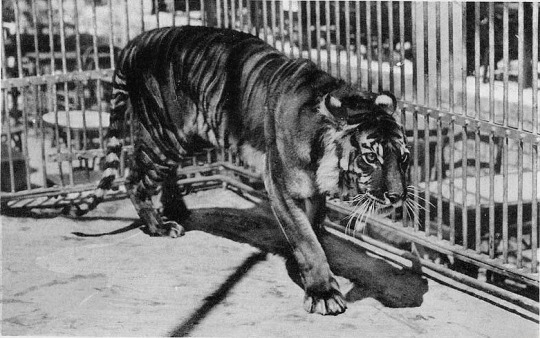
Javan tiger, P. t. sondaica
The Javan tiger was small, but just larger than the Bali, and similar in size to the still living Sumatran. They were notable in appearance by often having very sparse stripes around the front legs and shoulders.
This population was pronounced extinct by the IUCN in 2003, but the last confirmed sighting was recorded as far back as 1976. Several accounts of alleged sightings exist however, even within the last ten years, including a person supposedly being killed by a tiger in 2008.
In 2017, a blurry image surfaced of what was supposedly a Javan tiger. It was however most likely a Javan leopard, also a critically endangered cat.
We can always hope at least some of these alleged sightings were of tigers, but there is always the possibility that the animals witnessed were actually leopards.
At the turn of the last century, 28 million people lived on Java, while today, it is a jaw-dropping 145 million (resulting in a mind-blowing population density of 1.121 people per square kilometer - in comparison, the state of New York has a population denity of 416 people per square kilometer).
By the middle of the 1800s, people considered tigers a plague, and by the turn of the century, 150% more land had to be cleared for agriculture in only 15 years. By 1975, only 8% of the island's forests remained.
These tigers were poisoned, hunted, their main prey nearly died out, and the forests were cleared for lumber and agriculture.
To make things even worse, World War 2 happened, so the few that were kept in zoos were lost. After the war, it was easier to obtain Sumatran tigers, so none were taken from Java.
A funny thing to note is how the Javan people’s fear of the tiger led them to always referring to it as “Mr. Tiger”. They thought that if they spoke of it in a casual way, the tiger might hear them and take revenge.
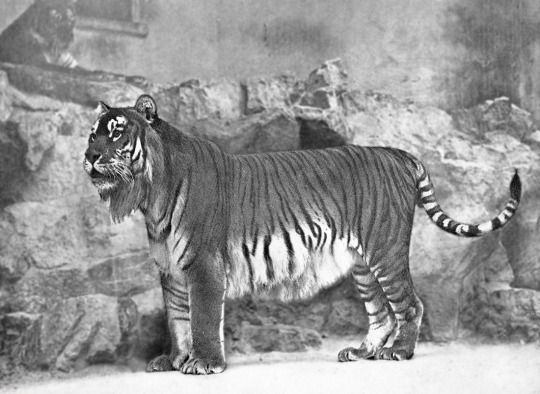
Caspian tiger, P. t. virgata
Like the Javan tiger, the Caspian was pronounced extinct by the IUCN in 2003, but the last record was in the early 1970s, and it died out some time during this decade.
It was possibly the largest cat in the world during recorded human history, after the ice age extinction of the cave lion.
It lived across parts of Georgia, Armenia and Azerbaijan, eastern Turkey, northern Iran, parts of Uzbekistan, Afghanistan, Turkmenistan, Kazakhstan, Kyrgyzstan, Tajikistan, even well into western China.
The last tiger in Georgia was shot in 1922, they were last recorded in Kazakhstan in 1948, one of the last in Iran was shot in 1953, the last in Turkmenistan was killed in 1954.
Tigers were killed both for sport and as pest control, including by the Soviet army. Up until World War 1, about a hundred tigers were killed in a forest area of the Afghanistan-Tajikistan border - every year. To make matters worse, their natural prey (pigs) declined heavily in the early 1900s due to overhunting and disease, and agriculture destroyed much of the tiger's natural habitat.
While this unique population is gone forever, there are plans to perhaps one day restock the area with Amur tigers, the closest living analogue to the Caspian tiger.
In a day when habitats are shrinking, other habitats may open up, and this could give the Amur tiger a greater hope to continue into the future.
The “there are more tigers in people’s backyards / basements than in the wild”-myth
More of a misrepresentation than a myth, it is true that there are more tigers in human care across the globe than there are in the wild. This is nothing strange for such an endangered animal.
The Scimitar-horned oryx, for example, was up until a couple of years ago extinct in the wild. There are now a few dozen roaming completely wild, while there are up to 11 000 of the antelopes in Texas alone.
The Eastern Bongo numbers around 400 animals in American collections alone, four times the population remaining in the wild!
The Przewalski's horse numbers around 2000 animals, and although many live in free-ranging reserves, only around 400 are considered truly wild and living in their native habitat, after reintroduction programs.
The Père David’s deer was extinct in the wild until some animals escaped and formed a population now some 700 strong, but it's still far outnumbered by the zoological population.
The blue-throated macaw numbers only around 300 animals in the wild, and the World Parrot Trust previously said there were "up to a thousand" in cages.
The Spix’s macaw numbers around 130 birds in human care, and was considered extinct in the wild since the last known bird disappeared in 2000, until one was discovered in 2016. If there are more in the wild, it is only a handful of scattered individuals.
The Hawaiian crow is extinct in the wild since 2002, with just over 100 birds in human care.
The Socorro dove has been extinct in the wild since 1972, with 150 birds alive today, all in cages.
The Guam rail is extinct in the wild since 1987, with some 160 birds alive in zoological facilities.
The orange-bellied parrot numbers around 340 in human care, with less than 20 in the wild.
It is however not true that there are more tigers in America than in the wild, let alone "in people's basements".
That claim is completely absurd, and while sometimes tigers are abused and neglected as with all animal species, that is extremely rare and would be far more common in their native Asia than in America.
According to the Feline Conservation Federation, the United States held just under 2900 tigers in 2011. In contrast, a decade ago in China, there were over 4000 tigers in human care in that country alone. The IUCN states (unknown date) that there are some 6000 tigers in China, mainly farmed for body parts.
We can debate the ethics of these various tiger facilities, but a large number also live in zoos and conservation centers. There is no such thing as several thousand "pet tigers" living in people's living rooms, backyards, or basements.

Privately owned tigers in America, courtesy of the Feline Conservation Federation.
But what the popular media likes to do, other than misrepresent the numbers (and say there are "10 000 pet tigers in American backyards" or some such nonsense), they also like to say that it's this vast number in human care ("captivity") that is the problem!
When people hear for example that there are 3000 tigers in the wild and 5000 or something in America, they seem to think America "stole" those tigers from the wild, and they must be put back! While in reality, tigers in the west have spent decades and generations on the continent, in zoos, circuses, and private collections.
And if you could take America's 2900 tigers and release them all, say hypothetically that it was allowed (many are not "pure") and that they could all survive in the wild. The threats on tigers in the wild, from poaching and habitat destruction, is still nowhere near gone.
So then we could have 5900 tigers for a while, and then a decade or two later, we'd be right back at 3000 again, with NOT ONE tiger alive in American breeding programs. Now who would that help?
That there are more tigers in human care than in the wild is a tragedy of the wild, not of "captivity".
In conclusion
Tigers are the most beloved endangered animal on the planet, and given both their popularity as well as their comparatively vast numbers in human care, the species stands a good chance at surviving indefinitely.
Whether that will only be in zoos, farms and other collections for the foreseeable future, or whether our children and grandchildren will have a chance to see tigers roaming freely in their natural habitats, free from persecution, is another question.
http://www.iucnredlist.org/details/15955/0
https://wildfact.com/forum/topic-on-the-edge-of-extinction-a-the-tiger-panthera-tigris?page=17
https://www.theguardian.com/uk/2004/dec/06/davidward
http://www.prweb.com/releases/2011/9/prweb8805806.htm
http://www.prweb.com/releases/2011/9/prweb8840075.htm
https://blog.nationalgeographic.org/2015/02/21/is-extinct-forever-central-asias-caspian-tiger-traverses-the-comeback-trail/
https://www.inverse.com/article/26481-caspian-tigers-extinct-central-asia-amur-kazakstan
https://asiancorrespondent.com/2018/04/south-korea-to-open-asias-largest-tiger-forest/
#Endangered Felines#tiger#Bengal tiger#Amur tiger#Siberian tiger#Sumatran tiger#Malayan tiger#Indochinese tiger#South China tiger#Bali tiger#Javan tiger#Caspian tiger#extinct animals#poaching#deforestation#Big Cat Rescue#BCR#pet tigers#pet tiger#exotic pets#Feline Conservation Federation
33 notes
·
View notes
Video
vimeo
UKRAINE Unreal from Joerg Daiber on Vimeo.
I was visiting Ukraine by the end of last summer and finished this edit a few weeks back. This was about the time when the news started reporting about Putin deploying his troops around the border of Ukraine. Ever since then I was hesitant to publish this film and it got worse every day with events proceeding.
So I know it's a very difficult time to post a film that shows a beautiful and picturesque Ukraine, that looks like it's straight out of a magical fairytale, while there are currently tanks surrounding the major cities, residential areas being shelled and millions of refugees trying to get out of the country.
It's heartbreaking to think about all the lovely people there and the suffering that they have to endure now. Something like this was unthinkable just a few months back. Of course the Donbas war was ongoing and everybody was still mad about Crimea, but regular and daily life was as normal as it could possibly be. I spoke with many people about their opinion on Russia and none of them was in favour of Russian politics and literally everybody felt much closer to Europe than to Russia. Most of them didn't even want their kids to learn Russian in school. I felt that the public mood towards Russian politics was even more negative as in many other former Soviet countries like Georgia, Moldova or Armenia. At least among younger people that I ran into.
I know its difficult to enjoy these images from another time, but it's a reminder how fragile and precious peace is and that we should not take it for granted.
This film was shot mainly around the Carpathian Mountain area. Shooting locations: Lviv, Lutsk, Tarakaniv Fort, Olesko Castle, Pidhirtsi Castle, Tunnel of Love, Dovbush rocks, Kamianets-Podilskyi Castle, Chernivtsi, Yaremche, Vorokhta, Yasinya, Drahobrat, Hoverla
I also have footage from Kyiv, Chernobly and Odessa, that I have not even looked at yet.
Gear list: Lumix GH5 amzn.to/3cqZg3G Lumis S 24-105 mm lens_ amzn.to/36s16h8 Lumix 7-14 mm amzn.to/3ckx3f4 Lumix 14-140mm amzn.to/3r61aeq Gimbal Weebill S amzn.to/3r77diC 360° Camera amzn.to/3cnMkeX Actioncam: amzn.to/3ta5QSc Mavic Pro 2 amzn.to/2Yxw0A4 DJI Mini 2 (Great with new EU regulation) amzn.to/2MG5mlW SSD amzn.to/36tQU7T & amzn.to/36r7u89 SD Cards: amzn.to/3agwXSV Boom Pole for Gimbal amzn.to/3tbrPIr Gorillpod: amzn.to/2NRM4uH Tripod: amzn.to/3r4Hibj Tall Tripod for „No drone zones“: amzn.to/3crDKw2 Backpack: amzn.to/3r2x4IH Macbook Pro: amzn.to/3j3KmBH iMac: amzn.to/2NQkSfP iPhone SE as screen for drone and Gimbal: amzn.to/3ox5eT9 Phone wristholder for „gimbal on pole shots“: amzn.to/3rctHPz Post Production: amzn.to/3tbUYDy
As an Amazon Associate, I earn a small fee from qualifying purchases.
Social Media Facebook: facebook.com/LittleBigWorld Twitter: twitter.com/spoonfilm YouTube: youtube.com/littlebigworld Web: spoonfilm.com
A time lapse & tilt shift & aerial video by Joerg Daiber
You can license raw footage clips from the Little Big World series here: gettyimages.de/video/spoonfilm?phrase=spoonfilm&sort=best#license
Music: Peer Gynt Suite Morning Mood & Anitra`s Dream by Edvard Grieg. Performed by Czech National Symphony Orchestra.
Shot with Lumix GH4 and GH5, 14-140mm and 7-14mm Lumix Lenses. Postproduction with DaVinci Resolve Studio.
This video is subject to copyright owned by spoonfilm gmbh. Any reproduction or republication of all or part of this video is expressly prohibited, unless spoonfilm has explicitly granted its prior written consent. All other rights reserved.
Copyright © 2022 spoonfilm. All Rights Reserved.
0 notes
Text
The heat is stifling
'Yeezy Shoes For Sale' MLS intends to expand coaching education and improve player identification. National team player who is a MLS senior vice president, said in a statement. "As we currently have 2,500 elite players and 250 top youth coaches in our academies, MLS is uniquely positioned to provide a new and enhanced platform.". Ms Conway is a counsellor to president Donald Trump and one of his most high profile advisors, but her husband, George Conway III, an attorney, often publicly criticises the president. Reopening schools and the wider New York economy is a careful balancing act, though deaths and hospitalizations from New Yeezy 350 the coronavirus continue to fall. "If you say, well, we done, can stay in the house anymore, let just reopen, just start business tomorrow, let go what happens"Armenia decries crimes against on genocide anniversaryArmenian Prime Minister Nikol Pashinyan on Friday decried crimes against "civilisation" and demanded an apology from Turkey as his country marked the 105th anniversary of the WWI era Armenian genocide. Our helpful comparison tool also lets you choose between highlighting differences between models, or, showing only differences a great way to better compare fitness bands.It's rather simple to use the Gadgets 360 smart bands comparison tool to get started, you need to start typing the name of the first smart band you're looking to compare in first field above. While you type, we will show you database matches and once you see the correct one, you'll need to tap it to select it. Repeat this process until you selected all the smart bands you want to compare, and then, press thebutton.You will then see a detailed smart bands comparison table, showing all their features side by side, such as water resistance, battery life, colours, Bluetooth version, compatible devices, fitness features, sensors, dimensions, and much, much more.
0 notes
Text
Armenian Church celebrates Feast of the Holy Translators – Panorama
New Post has been published on https://armenia.in-the.news/culture/armenian-church-celebrates-feast-of-the-holy-translators-panorama-29209-02-07-2020/
Armenian Church celebrates Feast of the Holy Translators – Panorama


The Armenian Apostolic Church on Thursday, July two, marks the Feast of the Holy Translators St. Sahak in addition to St. Mesrop, Qahana.am reports.
Catholicos St. Sahak Partev and Archimandrite St. Mesrop (Vardapet) Mashtots are the founders of Armenian literature and ecclesiastical bibliography.
St. Sahak Partev was the elder son of Catholicos St. Nersess the Great, and the last Catholicos of the Armenian Church who descended from the lineage of St. Gregory the Illuminator. He became Catholicos of All Armenians in 387 A.D., and reigned for an astounding 52 years. Being talented in music, and educated in the rhetorical arts, philosophy and linguistics, St. Sahak greatly contributed to the development of Armenian national culture. He was the strongest advocate for the creation of an Armenian Alphabet, to become its main patron.
St. Mesrop Mashtots was born inside 360 The.D. in addition to studied the Greek in addition to Persian different languages from child years. He initially dished up as a scribe in the royal courtroom. Leaving luxurious life right behind, he turns into a monk in addition to lives a great ascetic existence. During his speaking of the Gospel, St. Mesrop can feel the requirement to create an unique Armenian Alphabet and to have the Holy Bible translated into Armenian. For in those years, the Bible was only available in Greek and Syriac. In Armenia, there were in the past ciphers, or symbols, of used by the former pagan priests. Following the Great Conversion of the Armenian nation to Christianity, the symbols fell into disuse, and the only remaining copy was in Mesopotamia with a bishop named Daniel the Syrian. Upon the order of King Vramshapouh, the symbols are brought to Armenia from Bishop Daniel. However, while teaching his new students by means of those symbols for a short span of time, Mesrop soon finds them to be lacking, while they were imperfect and defective. Together together with his students that he departs regarding Mesopotamia, in addition to visits the cities of Antioch, Edessa, and Samosata, to perform further study. In 404/405 A.Deb., St. Mesrop creates the Armenian Alphabet through Divine Grace. For the first time inside the historical past of the nation, the Armenian individuals had a particular and unique alphabet.
Following the design of the Armenian Alphabet, St. Sahak and St. Mesrop opened up a school regarding translators in the city of Vagharshapat (Etchmiadzin). There they begin the translation of the Holy Bible into Armenian and achieved it so perfectly, that centuries hence the Armenian Translation is called the “Queen Translation of the Breath of God”. The first sentence translated from the Holy Bible is the opening verse of the Book of Proverbs: “To know wisdom and instruction, to perceive the words of understanding”.
St. Mesrop Mashtots passed away in Vagharshapat, and was buried in his home village of Oshakan. According to tradition, during the entire journey of transferring the remains of St. Mesrop to Oshakan, a canopy of light fell upon the pilgrims and accompanied them until they reached the tomb. The Church of St. Mesrop Mashtots, which exists currently, was built over his grave.
Read original article here.
0 notes
Text
World Cultural Heritage - On the Frontiers of Intercultural Clash and Dialogue - Armenia, Belarus, Georgia, Greece, Italy, Macedonia, Moldova, Spain, UK and Ukraine World Cultural Heritage ** Intercultural Challenges in Armenia, Belarus, Georgia, Greece, Italy, Macedonia, Moldova, Spain, UK and Ukraine ** Over the last 46 years the World’s population doubled from 3.7 billion to 7.4 billion. Development of economies and technologies lead to unimaginable... http://abroadship.org/world-cultural-heritage-on-the-frontiers-of-intercultural-clash-and-dialogue-armenia-belarus-georgia-greece-italy-macedonia-moldova-spain-uk-and-ukraine/ Abroadship.org
New Post has been published on http://abroadship.org/world-cultural-heritage-on-the-frontiers-of-intercultural-clash-and-dialogue-armenia-belarus-georgia-greece-italy-macedonia-moldova-spain-uk-and-ukraine/
World Cultural Heritage - On the Frontiers of Intercultural Clash and Dialogue - Armenia, Belarus, Georgia, Greece, Italy, Macedonia, Moldova, Spain, UK and Ukraine

World Cultural Heritage
** Intercultural Challenges in Armenia, Belarus, Georgia, Greece, Italy, Macedonia, Moldova, Spain, UK and Ukraine **
Over the last 46 years the World’s population doubled from 3.7 billion to 7.4 billion. Development of economies and technologies lead to unimaginable growth of traveling, migration, intermarriage, trade and essentially all human interactions. Migration flows make our societies increasingly multicultural, which can happen on harmonic ways of planned migration and immigration policies, and can take the extremely chaotic form, as it happened during the last humanitarian catastrophe in Middle East.
People are exposed to various cultural and faith traditions that once were hidden behind several curtains. For a searching mind the whole World Cultural Heritage is open to be explored and exploited, but this outstanding opportunity sometimes is causing more confusion than clarity in minds and hearts of the people.
Intercultural challenges appear on individual and organizational level. It is evident that societies face the extensive internationalization of businesses. Not a very long time ago it was quite possible to operate your local small scale business activities without caring too much about the international frameworks, trends and challenges, and now the effects of those schemes are changing even local business landscapes in very short runs.
There is a lot of work done on developing intercultural communication skills of the people, there are several legislative and program frameworks which are aimed at raising the efficiency of integration and communication processes, but in reality it is clear that it is not enough. Youth was, is and will be always on the frontiers of all the processes. On one hand it is one of the most disadvantaged and vulnerable parts of the society (which is especially relevant for several aging societies), but on the other hand due to its natural flexibility, youth energy and huge potential can be also one of the major forces for transforming the potential Clashes to fruitful Dialogues. To do so it needs a certain degree of awareness and concrete competences to operate in this global village that we live now in.
We feel it is important for youth leaders to understand the characteristics of mono-ethnic versus poly-ethnic culture. We want to address identity change issues in relation to the mix of cultures and migration. However, we want to abstract from the migration process as such and focus on what happens and how to deal with the post migration effect. Cultures can be assimilated or integrated. History teach us the dramatic effects of ghettoization. We want also to touch historical parallels of what happened to Babylonian culture and compare to nowadays Syrian culture.
Armenian Intercultural Story
Belarus Intercultural Story
Georgian Intercultural Story
Greek Intercultural Story
Italian Intercultural Story
Macedonian Intercultural Story
Moldovian Intercultural Story
Spanish Intercultural Story
Ukrainian Intercultural Story
UK Intercultural Story
Story of Abroadship’er Airidas Vainoras from London, UK:
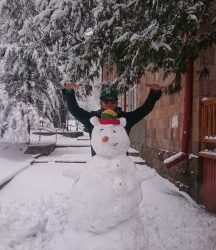
On the Frontiers of Intercultural Clash and Dialogue – Armenia – Airidas Vainoras
Let me begin by creating a title for this testimonial and a trip: “Intercultural Clash + Dialogue in English = Transenglish”. You will discover the reason of the name very soon.
“On the Frontiers of Intercultural Clash and Dialogue” was held in a beautiful country Armenia, which is situated on the Europe’s frontiers to Asia, where Christianity meets Islam.
It was my first time in this part of the Earth. It is called Caucasus. Only people from flatlands can understand my feelings, when you suddenly move to a place, which is surrounded by mountains. Needeless to say, we, highlanders, have a different attitude to mountains :) And stars, stars, stars which your can’t see in London. I could not enjoy more the silence that nature gave there.
I was so lucky that my cottage mate was Armenian. I am not superstitious, so I don’t care about devils dozen, but participants, who visited cottage number 13 now know what is real Armenian hospitality. It is clear that the best way to know local culture is to hang around with natives – walk in their shoes. We were the participants from different parts of Europe – here Western World met ex socialist ”lager” countries; Christianity, Islam and Sikhism. There was a real intercultural clash. And I think we all together managed to make the dialogue. What can be nicer when Greeks and Macedonians sit together by the same table. Alex (Alexander the Great) will be proud of you guys!!!
All participants represented their countries on ”Culture nights”. It was real fiesta with quizzes and prizes, traditional music, dances, dishes and drinks. We were united like a big international family, when we asked from our ”government” (trainers) trip to Garni and Geghard. They agreed for our demands. Power to the people, as John Lennon sang, so it’s how democracy works. This action was inspired by our Informal leader of course!
I want to say thank you organisers for amazing trip to Yerevan, where we met local NGO, which helps Syrian refugees families. Probably you didn’t know that Armenia has welcomed the third largest number of Syrian refugees as a proportion of total population. This country with its 3 million inhabitants, according to UNHCR (United Nations High Commissioner For Refugees), hosted 6 Syrian refugees per 1000 inhabitants. We also had a chance to look around the Yerevan, big thanks for tour ”Oh my guide”. Evening was crowned by amazing dinner with Armenian meals, drinks and live international music. And the sky rewarded us with it’s precious gift – the snow. What can be more joyful present for big kids on the first day of the winter, ah?
“I want to say thank you organisers for amazing trip to Yerevan, where we met local NGO, which helps Syrian refugees families” Airidas Vainoras
During the training course we were shaping our entrepreneurship skills on T-shirt market. It’s hard when you have only one product and a lot of buyers, who are offering almost equal price for it. We tried to solve global problems like refugee crisis on ”Forum Theatre”.
We were doing workshops for our colleagues participants – yoga, folk dancing or drawing sessions. And I had an honour to lead my first workshop ”Transenglish”. So what is Transenglish? It’s a language modification, when two non-english speakers speaks English and start to create new words, new pronouncations and it turns into comic situations. For example, Georgian says “Give me a keys”, but Lithuanian hears “Give me a kiss”. On this workshop we started from basics – simple words from our languages, what they have in common and how they are different. We were making small international (seven-lingual) vocabulary. I largely appreciate the cooperation and respectable attitude of people who attended this session. Transenglish team, thank you / Ačiū!
P.S. If you will participate in such kind of training courses, definitely take extra 3 days (it’s allowed by Erasmus+) to explore more the country where are you going.
Training course: On the Frontiers of Intercultural Clash and Dialogue
Location: Armenia
Dates: 24 November – 4 December 2016
Number of participants: 33
Participating countries: United Kingdom, Norway, Italy, Greece, Spain, Macedonia, Armenia, Belarus, Georgia, Ukraine, Moldova
Organizer: ICIRLD and Abroadship.org
Costs: Traveling expenses to Armenia, accommodation, food and programme are all FREE, since this project is financed by the Erasmus+ Programme, Abroadship.org and ICIRLD. The travel costs are covered up to the following limits: Spain – 820€ UK, Norway – 530€ Italy – 360€ Greece, Moldova, Ukraine, Belarus, Macedonia – 275€ Georgia – 180€ Armenia – 0€
Methodology
The methodological framework used will be based on the approaches and values of non-formal education. The course is participants-based and entirely participant-oriented. Experiences and contributions from participants constitute an inherent part of the Training Course.
Promoters jointly discuss the topics of this Training Course, will share their experiences in the field of youth activities, develop new ways, methods and tools addressing this topics and design new projects, and ensure the multiplication of this project while exploiting the results and educational concept of this Training Course.
Objectives
To provide an opportunity for participants from youth work sector for reflection on one the nowadays challenges of our societies in the spheres of inter-cultural and inter-civilizational dialogues;
To raise the awareness of youth workers on the influence and importance of intercultural communication, learning and dialogue on individual, business and global levels;
To equip participants with innovative tools and methods, which can be used in their communities in work with young people to support them in increasing the efficiency of their participation in various dialogue processes;
To reflect on the topics of World Cultural Heritage, needs of its protection and ways to increase the awareness and access of young people to it in order to widen their world-views as well as finding solutions for their today’s challenges in it;
To empower participants to deal with issues related to poly-cultural society development, identity change as a result of migration, ghettoization problems.
To increase the intercultural communication competences of the participants and to equip them with multiplying skills to further this work in their local communities;
To give participants the chance to commonly develop strategies to extend their activities by developing multi-stakeholder cooperation in the sphere of Intercultural Dialogue;
To develop follow-up projects for international cooperation to further elaborate the topics of current Training Course and involving more participants in the study and social transformation processes.
Participant’s profile
The Training Course is open to youth workers and leaders from various countries, who are interested in challenging their own perceptions and are ready to deeply reflect on the topics related to the objectives of the Training Course.
Have experience in delivering training modules in the field of intercultural learning to young people.
The Training Course is open for staff members or active volunteers in the NGOs dealing with projects in the thematic field of the training.
Participants should be committed to take part in the full duration of the project and have a mandate from their sending organizations for the initiation, development and implementation of follow-up projects for young people of their communities in the thematic fields of the Training Course.
As the working language of the Training will be English, participants should be able to communicate fluently in English.
Venue
The event will be held in one of the most popular hotels in Aghveran (50 km away from Yerevan, the capital of Armenia), in the mountainous forest – the Aghveran Park Resort hotel (http://parkresort.am/about-us/?lang=en). It has proven to be able to host international youth activities on a high quality level. The nature is very nice in the surroundings of the Hotel with lots of forests.
The weather in autumn-winter in Armenia is relatively cold so please make sure you take warm clothes with you. Please also keep in mind that the project venue is in the mountains and there might be some sudden weather changes, so you would also need a rainproof jacket. The rest house is fully equipped to host international projects with appropriate equipment, working spaces and leisure time activities. You will be sharing a double or triple room with another person/s of the same sex, each room has one bathroom. There are towels and bed linen in the hotel. Internet is available in/around the training hall and in most of the rooms.
The chef of the hotel (as well as other representatives) will be informed about the special needs of participants regarding the nutrition (such as vegetarian/vegan food, allergic issues, etc.) beforehand.
Note: The hosting organizations can support you in arranging accommodation for participants who arrive earlier to Armenia or need to stay longer
Traveling Costs
Travel costs for participants will be reimbursed up to the following maximum amounts:
Spain – 820€ UK, Norway – 530€ Italy – 360€ Greece, Moldova, Ukraine, Belarus, Macedonia – 275€ Georgia – 180€
The amounts are set by the European Commission based on the distance to the venue. Please remember that the lump sum will have to cover your transportation from Yerevan to Aghveran and back (20 EUR in total). You will receive a separate document on travel arrangements with a step-by-step instructions.
Participants, who will have considerable difficulties for pre-paying their flight tickets, will have opportunity to collaborate (with mediation of organizers) with a local travel agency in Armenia, who will arrange the travel ticket for them.
Partners
ASSOCIAZIONE SOS EUROPA (Italy) Nordisk Institutt for Trening og Internasjonalt Nettverk (Norway) Hellas for Us (Greece) New Faces (Belarus) Helping Hand (Georgia) My_UA (Ukraine) Artena (Moldova) Intercambia (Spain) PEL Skopje (Macedonia) ICIRLD (Armenia) Abroadship (UK)
About organisers
“ICIRLD” (Armenia) is a non-governmental organization, which has a mission to build a world where Cultural Diversity is RESPECTED and VALORISED, where the “Culture of War” is replaced by a CULTURE OF PEACE, and where people from different cultural backgrounds work hand in hand for the solution of global problems and for sustainable development.
Aims of the organization: Promotion of intercultural, inter-religious and inter-civilization dialogue; Conflict resolution and establishment of a Culture of Peace in the world; Consolidation of the potential of representatives of different cultures for the solution of global challenges
Our Objectives: Research of cultural peculiarities of different ethnic and cultural groups as well as comparative inter-cultural research and presentation of results to a wider audience; Research and training courses on intercultural learning on national, regional and international level; Development of a database on cultures of the world; Organization of various international youth projects in the framework of the programs of Council of Europe and European Commission
Abroadship.org (UK) is a centre of learning through mobility. Abroadship focuses on youth and particularly British youth to enhance their opportunities abroad. Abroadship is a non-profit and non-government initiative, officially registered under a Subtiluship community interest company (see the details below) in London, UK.
Our desire and mission is to encourage you to become world’s citizen with tolerance, sympathy and empathy towards different cultures, with understanding and appreciation of environment, with knowledge of interdependence, connection and benefits of collaboration.
We strive to create tools, provide information, organize events, training courses, exchange programs and in all ways possible enhance benefiting from being abroad. We want you to be more abroad-intelligent by: traveling abroad, exchanging abroad, studying abroad, working abroad, training abroad, living abroad, finding friends abroad, collaborating abroad.
Project Team
Justinas Brikys, a director and founder of Abroadship.org (Subtiluship C.I.C.), will be a project manager and trainer for this training course. Justinas will share cultural insights from the places he lived, studied and worked: Lithuania, Denmark, USA, China, Brasil and UK.
Areg Tadevosyan will be a trainer for this project. He is a youth worker since 2005. He is experienced professional involved in organizing non-formal learning process for young people and young workers/leaders (also one of the promoters of non-formal education in Armenia). He is experienced trainer and project manager, who has organized and run various international training courses, seminars and youth exchanges with non-formal learning methods.
Suren Mkhitaryan is the project manager of a long-term project funded by EU, aiming at developing deprived urban and rural areas through establishing social enterprises. He had long-term experience in educational sphere (also holding degree of international project on education management), as well as was fostering the non-formal educational development in higher and vocational educational sphere in Armenia, also was responsible in a national body for internationalization of higher education sphere, and development of intercultural competencies in students.
Detailed desription: here
0 notes
Text
Events 3.12
538 – Vitiges, king of the Ostrogoths ends his siege of Rome and retreats to Ravenna, leaving the city in the hands of the victorious Byzantine general, Belisarius 1550 – Several hundred Spanish and indigenous troops under the command of Pedro de Valdivia defeat an army of 60,000 Mapuche at the Battle of Penco during the Arauco War in present-day Chile. 1622 – Ignatius of Loyola and Francis Xavier, founders of the Society of Jesus, are canonized by the Roman Catholic Church. 1689 – The Williamite War in Ireland begins. 1811 – Peninsular War: A day after a successful rearguard action, French Marshal Michel Ney once again successfully delayed the pursuing Anglo-Portuguese force at the Battle of Redinha. 1864 – American Civil War: The Red River Campaign begins as a US Navy fleet of 13 Ironclads and 7 Gunboats and other support ships enter the Red River. 1881 – Andrew Watson makes his Scotland debut as the world's first black international football player and captain. 1885 – Tonkin Campaign: France captures the citadel of Bắc Ninh. 1894 – Coca-Cola is bottled and sold for the first time in Vicksburg, Mississippi, by local soda fountain operator Joseph A. Biedenharn. 1912 – The Girl Guides (later renamed the Girl Scouts of the USA) are founded in the United States. 1913 – Canberra Day: The future capital of Australia is officially named Canberra. (Melbourne remains temporary capital until 1927 while the new capital is still under construction.) 1918 – Moscow becomes the capital of Russia again after Saint Petersburg held this status for 215 years. 1920 – The Kapp Putsch begins when the Marinebrigade Ehrhardt is ordered to march on Berlin. 1921 – İstiklâl Marşı is adopted in the Grand National Assembly of Turkey. 1922 – Armenia, Georgia, and Azerbaijan form the Transcaucasian Socialist Federative Soviet Republic. 1928 – In California, the St. Francis Dam fails; the resulting floods kill 431 people. 1930 – Mahatma Gandhi begins the Salt March, a 200-mile march to the sea to protest the British monopoly on salt in India. 1933 – Great Depression: Franklin D. Roosevelt addresses the nation for the first time as President of the United States. This is also the first of his "fireside chats". 1934 – Konstantin Päts and General Johan Laidoner stage a coup in Estonia, and ban all political parties. 1938 – Anschluss: German troops occupy and absorb Austria. 1940 – Winter War: Finland signs the Moscow Peace Treaty with the Soviet Union, ceding almost all of Finnish Karelia. Finnish troops and the remaining population are immediately evacuated. 1942 – World War II: Pacific War: The Battle of Java ends with an ABDACOM surrender to the Japanese Empire in Bandung, West Java, Dutch East Indies. 1943 – Italian occupation of Greece: The Italian occupying forces abandon the town of Karditsa to the partisans. On the same day, an Italian motorized column razes the village of Tsaritsani, burning 360 of its 600 houses and shooting 40 civilians. 1947 – Cold War: The Truman Doctrine is proclaimed to help stem the spread of Communism. 1950 – The Llandow air disaster occurs near Sigingstone, Wales, in which 80 people die when their aircraft crashed, making it the world's deadliest air disaster at the time. 1961 – First winter ascent of the North Face of the Eiger. 1967 – Suharto takes power from Sukarno when the MPRS inaugurate him as Acting President of Indonesia. 1968 – Mauritius achieves independence from the United Kingdom. 1971 – The March 12 Memorandum is sent to the Suleyman Demirel government of Turkey and the government resigns. 1992 – Mauritius becomes a republic while remaining a member of the Commonwealth of Nations. 1993 – Several bombs explode in Mumbai, India, killing about 300 and injuring hundreds more. 1993 – North Korea nuclear weapons program: North Korea says that it plans to withdraw from the Treaty on the Non-Proliferation of Nuclear Weapons and refuses to allow inspectors access to its nuclear sites. 1994 – The Church of England ordains its first female priests. 1999 – Former Warsaw Pact members the Czech Republic, Hungary and Poland join NATO. 2003 – Zoran Đinđić, Prime Minister of Serbia, is assassinated in Belgrade. 2003 – WHO officially release global warning on pandemic SARS disease. 2004 – The President of South Korea, Roh Moo-hyun, is impeached by its National Assembly: The first such impeachment in the nation's history. 2009 – Financier Bernard Madoff pleads guilty in New York to scamming $18 billion, the largest in Wall Street's history. 2011 – A reactor at the Fukushima Daiichi Nuclear Power Plant melts and explodes and releases radioactivity into the atmosphere a day after Japan's earthquake. 2014 – A gas explosion in the New York City neighborhood of East Harlem kills eight and injures 70 others.
0 notes
Text
Nikos Deja Vu - Ο Μέγας Βασίλειος (Basilius Magnus - Saint Basil of Caesarea - Vasileios The Great (The Greek Santa Claus)
Basil of Caesarea (Πατήστε ΕΔΩ για Ελληνικά) Βασίλειος ο Μέγας Αγιος Βασίλειος Vasileios The Great - Saint Basil (The Greek Santa Claus)
Saint Basil of Caesarea, also called Basil the Great (between 329 and 333 - January 1, 379) (Greek: Άγιος Βασίλειος ο Μέγας; Latin: Basilius), was the Bishop of Caesarea in Cappadocia, and an influential 4th century Christian theologian. Theologically, Basil was a supporter of the Nicene faction of the church, in opposition to the Arians on one side and the Appollanarians on the other. His ability to balance his theological convictions with his political connections - especially with the Arian Emperor Valens - made Basil a powerful advocate for the Nicene position. In addition to his work as a theologian, Basil was known for his care of the poor and underpriveleged. He is considered a saint by the traditions of both Eastern and Western Christianity. Basil, Gregory Nazianzus, and Basil's brother Gregory of Nyssa are collectively referred to as the Cappadocian Fathers. The Eastern Orthodox Church and Eastern Catholic Churches have given him, together with Gregory Nazianzus and John Chrysostom, the title of the Three Great Hierarchs, while the Roman Catholic Church has named him a Doctor of the Church. He is also referred to as "the revealer of heavenly mysteries" (Ouranophantor). Basil established guidelines for monastic life which focus on community life, liturgical prayer and manual labor. Together with Saint Pachomius he is remembered as a father of communal monasticism in Eastern Christianity.
Life and education
Basil was born into the wealthy Greek family of Basil the Elder and Emelia around 330 in Caesarea Mazaca in Cappadocia (now known as Kayseri in Turkey). It was a large household, consisting of nine (or ten) children, the parents, and Basil's grandmother, Macrina the Elder. His parents were known for their piety, and his maternal grandfather was a Christian martyr, executed in the years prior to Constantine's conversion. Four of Basil's siblings are known by name, and considered to be saints by various Christian traditions. His older sister Macrina the Younger was a well-known nun. His older brother Peter served as bishop of Sebaste in Armenia, and wrote a few well-known tehological treatises. His brother Naucratius was an anchorite, and inspired much of Basil's theological work. Perhaps the most influential of Basil's siblings was his younger brother Gregory. Gregory was appointed by Basil to be the bishop of Nyssa, and he produced a number of writings defending Nicene theology and describing the life of early Christian monastics. Some church historians presumed Theosebia was also Basil's youngest sister, although this identification is not certain. Shortly after Basil's birth, the family moved to the estate of his grandmother Macrina, in the region of Pontus. There, Basil was educated in the home by his father and grandmother. He was greatly influenced by the elder Macrina, who herself was a student of Gregory Thaumaturgus. Following the death of his father during his teenage years, Basil returned to Caesarea in Cappadocia around 350-51 to begin his formal education. There he met Gregory of Nazianzus, who would become a lifetime friend. Together, Basil and Gregory went on to study in Constantinople, where they would have listened to the lectures of Libanius. Finally, the two spent almost six years in Athens starting around 349, where they met a fellow student who would become the unfortunate emperor Julian the Apostate. It was at Athens that he seriously began to think of religion, and resolved to seek out the most famous hermit saints in Syria and Arabia in order to learn from them how to attain enthusiastic piety and how to keep his body under submission by asceticism, what he called the "philosophical life." Prior to his decision to become a monk, he opened an oratory and practiced law in Ceasarea. He also taught rhetoric, which at the time was a very respectable place in university curricula.
Arnesi
After this, we find him as spiritual director of a convent near Arnesi in Pontus, in which his mother Emelia, then widowed, his sister Macrina and several other women, gave themselves to a pious life of prayer and charitable works. Eustathius of Sebaste had already labored in Pontus in behalf of the anchoretic life, and Basil revered him on that account, although they differed over dogmatic points, which gradually separated these two men. Basil himself gathered several disciples around him, including his own brother Peter, and these men gathered together to found the first monastery in Asia Minor. He remained there for only five years. It was here, however, that Basil wrote his works regarding monastic communal life, which are accounted as being pivotal in the development of the monastic tradition of the Eastern Church and have led to his being called the "father of Eastern communal monasticism". In 358, he left that monastery with Gregory and they became hermits, dividing their time between prayer, writing, and contemplation. It was at this time that he wrote his Philocalia, a collection of texts drawn from Origen. Siding from the beginning and at the Council of Constantinople in 360 with the Homoousians, Basil went especially with those who overcame the aversion to homoousios in common opposition to Arianism, thus drawing nearer to Athanasius of Alexandria. Like Athanasius, he was also opposed to the Macedonianism. He also became a stranger to his bishop, Dianius of Caesarea, who had subscribed only to the earlier Nicene form of agreement, and became reconciled to him only when the latter was about to die.
Caesarea
In 362 he was ordained a deacon by Bishop Meletius of Antioch. He was summoned by Eusebius of Caesarea to his city, and was ordained presbyter of the Church there in 365. His ordination was probably the result of the entreaties of his ecclesiastical superiors, who wished to use his talents against the Arians, who were numerous in that part of the country and were favoured by the Arian emperor, Valens, who then reigned in Constantinople. Basil and Gregory Nazianzus spent the next few years combating the Arian heresy, which threatened to divide the region of Cappadocia. The two friends then entered a period of close fraternal cooperation as they participated in a great rhetorical contest of the Caesarean church precipitated by the arrival of accomplished Arian theologians and rhetors. In the subsequent public debates, presided over by agents of Valens, Gregory and Basil emerged triumphant. This success confirmed for both Gregory and Basil that their futures lay in administration of the church. Basil next took on functional administration of the Diocese of Caesarea.Eusebius is reported as becoming jealous of the reputation and influence which Basil quickly developed, and allowed Basil to return to his earlier solitude. Later, however, Gregory persuaded Basil to return. Basil did so, and became the effective manager of the diocese for several years, while giving all the credit to Eusebius. In 370, Eusebius died, and Basil was chosen to succeed him. His new post as bishop of Caesarea also gave him the powers of exarch of Pontus and metropolitan of five suffragan bishops, many of whom had opposed him in the election for Eusebius's successor. It was then that his great powers were called into action. Hot-blooded and somewhat imperious, Basil was also generous and sympathetic. He personally organized a soup kitchen and distributed food to the poor during a famine following a drought. He gave away his personal family inheritance to benefit the poor of his diocese. His letters show that he actively worked to reform thieves and prostitutes. They also show him encouraging his clergy not to be tempted by wealth or the comparatively easy life of a priest, and that he personally took care in selecting worthy candidates for holy orders. He also had the courage to criticize public officials who failed in their duty of administering justice. At the same time, he preached every morning and evening in his own church to large congregations. In addition to all the above, he built a large complex just outside Caesarea, called the Basiliad, which included a poorhouse, hospice, and hospital, and was regarded at the time as one of the wonders of the world. His zeal for orthodoxy did not blind him to what was good in an opponent; and for the sake of peace and charity he was content to waive the use of orthodox terminology when it could be surrendered without a sacrifice of truth. The Emperor Valens, who was an adherent of the Arian philosophy, sent his prefect Modestus to at least agree to a compromise with the Arian faction. Basil's adamant response in the negative prompted Modestus to say that no one had ever spoken to him in that way before. Basil replied, "Perhaps you have never yet had to deal with a bishop." Modestus reported back to Valens that he believed nothing short of violence would avail against Basil. Valens was apparently unwilling to engage in violence. He did however issue orders banishing Basil repeatedly, none of which succeeded. Valens came himself to attend when Basil celebrated the Divine Liturgy on the Feast of the Theophany (Epiphany), and at that time was so impressed by Basil that he donated to him some land for the building of the Basiliad. This interaction helped to define the limits of governmental power over the church.
Basil then had to face the growing spread of Arianism. This belief system, which denied that Christ was consubstantial with the Father, was quickly gaining adherents and was seen by many, particularly those in Alexandria most familiar with it, as posing a threat to the unity of the church. Basil entered into connections with the West, and with the help of Athanasius, he tried to overcome its distrustful attitude toward the Homoiousians. The difficulties had been enhanced by bringing in the question as to the essence of the Holy Spirit. Although Basil advocated objectively the consubstantiality of the Holy Spirit with the Father and the Son, he belonged to those, who, faithful to Eastern tradition, would not allow the predicate homoousios to the former; for this he was reproached as early as 371 by the Orthodox zealots among the monks, and Athanasius defended him. He maintained a relationship with Eustathius despite dogmatic differences. On the other hand, Basil was grievously offended by the extreme adherents of Homoousianism, who seemed to him to be reviving the Sabellian heresy. Basil corresponded with Pope Damasus in the hope of having the Roman bishop condemn heresy wherever found, both East and West. The Pope's apparent indifference upset Basil's zeal and he turned around in distress and sadness. It is still a point of controversy over how much he believed the Roman See could do for the Churches in the East, as many Roman Catholic theologians claim the primacy of the Roman bishopric over the rest of the Churches, both in doctrine and in authoritative strength. He did not live to see the end of the unhappy factional disturbances and the complete success of his continued exertions in behalf of the Church. He suffered from liver illness and his excessive asceticism seems to have hastened him to an early death. A lasting monument of his episcopal care for the poor was the great institute before the gates of Caesarea, which was used as poorhouse, hospital, and hospice. The 5th century church historian Sozomen records a meeting between Basil and Ephraim the Syrian, though many modern scholars dismiss the account as legendary.
Writings
The principal theological writings of Basil are his On the Holy Spirit, a lucid and edifying appeal to Scripture and early Christian tradition (to prove the divinity of the Holy Spirit), and his Refutation of the Apology of the Impious Eunomius, written in 363 or 364, three books against Eunomius of Cyzicus, the chief exponent of Anomoian Arianism. The first three books of the Refutation are his work; the fourth and fifth books that are usually included do not belong to Basil, or to Apollinaris of Laodicea, but probably to Didymus "the Blind" of Alexandria. He was a famous preacher, and many of his homilies, including a series of Lenten lectures on the Hexaemeron (the Six Days of Creation), and an exposition of the psalter, have been preserved. Some, like that against usury and that on the famine in 368, are valuable for the history of morals; others illustrate the honor paid to martyrs and relics; the address to young men on the study of classical literature shows that Basil was lastingly influenced by his own education, which taught him to appreciate the propaedeutic importance of the classics. In his exegesis Basil tended to interpret Scripture literally—following more the Antiochian school—rather than allegorically as Origen and the Alexandrian school had done. Concerning this, he wrote: "I know the laws of allegory, though less by myself than from the works of others. There are those, truly, who do not admit the common sense of the Scriptures, for whom water is not water, but some other nature, who see in a plant, in a fish, what their fancy wishes, who change the nature of reptiles and of wild beasts to suit their allegories, like the interpreters of dreams who explain visions in sleep to make them serve their own end." His ascetic tendencies are exhibited in the Moralia and Asketika (sometimes mistranslated as Rules of St. Basil), ethical manuals for use in the world and the cloister, respectively. Of the two works known as the Greater Asketikon and the Lesser Asketikon, the shorter is the one most probably his work. It is in the ethical manuals and moral sermons that the practical aspects of his theoretical theology are illustrated. So, for example, it is in his Sermon to the Lazicans that we find St. Basil explaining how it is our common nature that obliges us to treat our neighbor's natural needs (e.g., hunger, thirst) as our own, even though he is a separate individual. Later theologians explicitly explain this as an example of how the saints become an image of the one common nature of the persons of the Trinity. His three hundred letters reveal a rich and observant nature, which, despite the troubles of ill-health and ecclesiastical unrest, remained optimistic, tender and even playful. His principal efforts as a reformer were directed towards the improvement of the liturgy, and the reformation of the monastic institutions of the East. Most of the liturgies bearing the name of Basil are not entirely his work in their present form, but they nevertheless preserve a recollection of Basil's activity in this field in formularizing liturgical prayers and promoting church-song. One liturgy that can be attributed to him is The Divine Liturgy of Saint Basil the Great, a liturgy that is somewhat longer than the more commonly used Divine Liturgy of St. John Chrysostom. The difference between the two is primarily in the silent prayers said by the priest, and in the use of the hymn to the Theotokos, All of Creation, instead of the Axion Estin of Saint John Chrysostom's Liturgy. Chrysostom's Liturgy has come to replace Saint Basil's on most days in the Eastern Orthodox and Byzantine Catholic liturgical traditions. However, they still use Saint Basil's Liturgy on certain feast days: the first five Sundays of Great Lent; the Eves of Nativity and Theophany; and on Maundy Thursday and Holy Saturday; and the Feast of Saint Basil, January 1 (for those churches which follow the Julian Calendar, their January 1 falls on January 14 of the Gregorian Calendar). The Eastern Churches preserve numerous other prayers attributed to Saint Basil, including three Prayers of Exorcism, several Morning and Evening Prayers, the "Prayer of the Hours" which is read at each service of the Daily Office, and the long and moving "Kneeling Prayers" which are recited by the priest at Vespers on Pentecost in the Byzantine Rite. Most of his extant works, and a few spuriously attributed to him, are available in the Patrologia Graecae, which includes Latin translations of varying quality. Several of St. Basil's works have appeared in the late twentieth century in the Sources Chretiennes collection. No critical edition is yet available.
Legacy
Basil was given the title Doctor of the Church for his contributions to the debate initiated by the Arian controversy regarding the nature of the Trinity, and especially the question of the divinity of the Holy Spirit. Basil was responsible for defining the terms ousia (nature) and hypostasis (being or person), and for defining the classic formulation of three Persons in one Nature. His single greatest contribution was his insistence on the divinity and consubstantiality of the Holy Spirit with the Father and the Son. Basil of Caesarea holds a very important place in the history of Christian liturgy, coming as he did at the end of the age of persecution. At this time, liturgical prayers were transitioning from being extemporaneous or memorized into written formulas, and liturgy began to be influenced by court ritual. Basil's liturgical influence is well attested in early sources. Though it is difficult at this time to know exactly which parts of the Divine Liturgies which bear his name are actually his work, a vast corpus of prayers attributed to him has survived in the various Eastern Christian churches. Tradition also credits Basil with the elevation of the iconostasis to its present height. The Basilian Fathers, also known as The Congregation of St. Basil, an international order of Roman Catholic priests and students studying for the priesthood, is named after him. It is a common misconception that Saint Basil's Cathedral in Moscow is named after Basil the Great; however, it is in fact named after Saint Basil the Fool for Christ (Yurodivy). In Greek tradition, his name was given to Father Christmas and is supposed to visit children and give presents every January 1 (when Basil's memory is celebrated)—unlike other traditions where this person is Saint Nicholas and comes either on December 6 (St. Nicholas' Day) or on Christmas Eve. It is traditional on St. Basil's Day to serve Vasilopita, a rich bread baked with a coin inside, in commemoration of St. Basil's charity. It is customary on his feast day to visit the homes of friends and relatives, to sing carols, and to set an extra place at the table for Saint Basil.
Feast day
Basil died on January 1, and this continues to be the day on which his feast day is celebrated, in conjunction with with the Feast of the Circumcision, throughout Eastern Christianity (for those churches which follow the traditional Julian Calendar, January 1 falls on January 14 of the modern Gregorian Calendar). However, in the calendar of saints of the Roman Catholic Church Saint Basil is commemorated on January 2. Prior to the reforms of the Second Vatican Council, his feast day was celebrated on June 14 in the West. The Church of England celebrates him on January 2, while the Episcopal Church continues to commemorate him on June 14. The Lutheran calendar commemorates Basil the Great on January 10 and June 14, in both cases he is remembered together with Gregory Nazianzus and Gregory of Nyssa. An additional feast day is celebrated on January 30 (February 12) by the Eastern Orthodox and Byzantine Catholic churches on which Saint Basil is celebrated together with Gregory the Theologian and John Chrysostom, a feast which is known as the Synaxis of the Three Holy Hierarchs. The Coptic Orthodox Church of Alexandria celebrates the feast day of Saint Basil on the 6th of Tobi (6th of Terr on the Ethiopian calendar of the Ethiopian Orthodox Tewahedo Church). This corresponds with either January 15 or January 16 of the Gregorian Calendar, depending upon the year.
Relics
Although numerous relics of Saint Basil are found throughout the world, one of the most important is his head, which is preserved to this day at the monastery of the Great Lavra on Mount Athos in Greece.
An interesting Metamorphosis of Santa in Demre (Antalya - Turkey)
The metamorphosis of the humble Santa Claus (the Greek Saint Nicholas in reality) into the commercially more interesting "Santa Claus", which took several centuries in Europe and America, has recently been re-enacted in the Saint's home town, the city of Demre. This modern Turkish town is built near the ruins of ancient Myra. As St. Nicholas is a very popular Orthodox saint, the city attracts many Russian tourists. A solemn bronze statue of the Saint by the Russian sculptor Gregory Pototsky, donated by the Russian government in 2000, was given a prominent place on the square in front of the medieval church of St. Nicholas. In 2005, mayor Suleyman Topcu had the statue replaced by a red-suited plastic Santa Claus statue, because he wanted the central statue to be more recognizable to visitors from all over the world. Protests from the Russian government against this action were successful only to the extent that the Russian statue was returned, without its original high pedestal, to a corner near the church.
Nikos Deja Vu n1999k.blogspot.com
0 notes
Text
Armenian Church celebrates Feast of the Holy Translators
New Post has been published on https://armenia.in-the.news/culture/armenian-church-celebrates-feast-of-the-holy-translators-28809-30-06-2020/
Armenian Church celebrates Feast of the Holy Translators


The Armenian Apostolic Church on Thursday, July 2, marks the Feast of the Holy Translators St. Sahak and St. Mesrop, Qahana.am reports.
Catholicos St. Sahak Partev and Archimandrite St. Mesrop (Vardapet) Mashtots are the founders of Armenian literature and ecclesiastical bibliography.
St. Sahak Partev was the elder son of Catholicos St. Nersess the Great, and the last Catholicos of the Armenian Church who descended from the lineage of St. Gregory the Illuminator. He became Catholicos of All Armenians in 387 A.D., and reigned for an astounding 52 years. Being talented in music, and educated in the rhetorical arts, philosophy and linguistics, St. Sahak greatly contributed to the development of Armenian national culture. He was the strongest advocate for the creation of an Armenian Alphabet, and became its chief patron.
St. Mesrop Mashtots was born in 360 A.D. and studied the Greek and Persian languages from childhood. He initially served as a scribe in the royal court. Leaving secular life behind, he becomes a monk and lives an ascetic life. During his preaching of the Gospel, St. Mesrop feels the necessity to create a distinct Armenian Alphabet and to have the Holy Bible translated into Armenian. For in those years, the Bible was only available in Greek and Syriac. In Armenia, there once were ciphers, or symbols, which were used by the former pagan priests. Following the Great Conversion of the Armenian nation to Christianity, the symbols fell into disuse, and the only remaining copy was in Mesopotamia with a bishop named Daniel the Syrian. Upon the order of King Vramshapouh, the symbols are brought to Armenia from Bishop Daniel. However, while teaching his new students by means of those symbols for a short period of time, Mesrop soon finds them to be lacking, as they were imperfect and defective. Together with his students he departs for Mesopotamia, and visits the cities of Antioch, Edessa, and Samosata, to conduct further research. In 404/405 A.D., St. Mesrop creates the Armenian Alphabet through Divine Grace. For the first time in the history of the nation, the Armenian people had a specific and distinctive alphabet.
Following the creation of the Armenian Alphabet, St. Sahak and St. Mesrop opened a school for translators in the city of Vagharshapat (Etchmiadzin). There they begin the translation of the Holy Bible into Armenian and did it so perfectly, that centuries hence the Armenian Translation is called the “Queen Translation of the Breath of God”. The first sentence translated from the Holy Bible is the opening verse of the Book of Proverbs: “To know wisdom and instruction, to perceive the words of understanding”.
St. Mesrop Mashtots passed away in Vagharshapat, and was buried in his home village of Oshakan. According to tradition, during the entire journey of transferring the remains of St. Mesrop to Oshakan, a canopy of light fell upon the pilgrims and accompanied them until they reached the tomb. The Church of St. Mesrop Mashtots, which exists to date, was built over his grave.
Read original article here.
0 notes
Text
Events 3.12
538 – Vitiges, king of the Ostrogoths ends his siege of Rome and retreats to Ravenna, leaving the city in the hands of the victorious Byzantine general, Belisarius 1550 – Several hundred Spanish and indigenous troops under the command of Pedro de Valdivia defeat an army of 60,000 Mapuche at the Battle of Penco during the Arauco War in present-day Chile 1622 – Ignatius of Loyola and Francis Xavier, founders of the Society of Jesus, are canonized by the Roman Catholic Church 1689 – The Williamite War in Ireland begins. 1811 – Peninsular War: A day after a successful rearguard action, French Marshal Michel Ney once again successfully delayed the pursuing Anglo-Portuguese force at the Battle of Redinha 1864 – American Civil War: The Red River Campaign begins as a US Navy fleet of 13 Ironclads and 7 Gunboats and other support ships enter the Red River 1881 – Andrew Watson makes his Scotland debut as the world's first black international football player and captain. 1885 – Tonkin Campaign: France captures the citadel of Bắc Ninh. 1894 – Coca-Cola is bottled and sold for the first time in Vicksburg, Mississippi, by local soda fountain operator Joseph A. Biedenharn. 1912 – The Girl Guides (later renamed the Girl Scouts of the USA) are founded in the United States. 1913 – Canberra Day: The future capital of Australia is officially named Canberra. (Melbourne remains temporary capital until 1927 while the new capital is still under construction.) 1918 – Moscow becomes the capital of Russia again after Saint Petersburg held this status for 215 years. 1920 – The Kapp Putsch begins when the Marinebrigade Ehrhardt is ordered to march on Berlin. 1921 – İstiklâl Marşı is adopted in the Grand National Assembly of Turkey. 1922 – Armenia, Georgia and Azerbaijan form the Transcaucasian Socialist Federative Soviet Republic 1928 – In California, the St. Francis Dam fails; the resulting floods kills 431 people. 1930 – Mahatma Gandhi begins the Salt March, a 200-mile march to the sea to protest the British monopoly on salt in India 1933 – Great Depression: Franklin D. Roosevelt addresses the nation for the first time as President of the United States. This is also the first of his "fireside chats". 1934 – Konstantin Päts and General Johan Laidoner stage a coup in Estonia, and ban all political parties. 1938 – Anschluss: German troops occupy and absorb Austria. 1940 – Winter War: Finland signs the Moscow Peace Treaty with the Soviet Union, ceding almost all of Finnish Karelia. Finnish troops and the remaining population are immediately evacuated. 1942 – World War II: Pacific War: The Battle of Java ends with an ABDACOM surrender to the Japanese Empire in Bandung, West Java, Dutch East Indies. 1943 – Italian occupation of Greece: The Italian occupying forces abandon the town of Karditsa to the partisans. On the same day, an Italian motorized column razes the village of Tsaritsani, burning 360 of its 600 houses and shooting 40 civilians. 1947 – Cold War: The Truman Doctrine is proclaimed to help stem the spread of Communism. 1950 – The Llandow air disaster occurs near Sigingstone, Wales, in which 80 people die when their aircraft crashed, making it the world's deadliest air disaster at the time. 1961 – First winter ascent of the North Face of the Eiger. 1967 – Suharto takes power from Sukarno when the MPRS inaugurate him as Acting President of Indonesia. 1968 – Mauritius achieves independence from the United Kingdom. 1971 – The March 12 Memorandum is sent to the Suleyman Demirel government of Turkey and the government resigns. 1992 – Mauritius becomes a republic while remaining a member of the Commonwealth of Nations. 1993 – Several bombs explode in Mumbai, India, killing about 300 and injuring hundreds more. 1993 – North Korea nuclear weapons program: North Korea says that it plans to withdraw from the Treaty on the Non-Proliferation of Nuclear Weapons and refuses to allow inspectors access to its nuclear sites. 1994 – The Church of England ordains its first female priests. 1999 – Former Warsaw Pact members the Czech Republic, Hungary and Poland join NATO. 2003 – Zoran Đinđić, Prime Minister of Serbia, is assassinated in Belgrade. 2003 – WHO officially release global warning on pandemic SARS disease. 2004 – The President of South Korea, Roh Moo-hyun, is impeached by its National Assembly: The first such impeachment in the nation's history. 2009 – Financier Bernard Madoff pleads guilty in New York to scamming $18 billion, the largest in Wall Street's history. 2011 – A reactor at the Fukushima Daiichi Nuclear Power Plant melts and explodes and releases radioactivity into the atmosphere a day after Japan's earthquake. 2014 – A gas explosion in the New York City neighborhood of East Harlem kills eight and injures 70 others.
0 notes